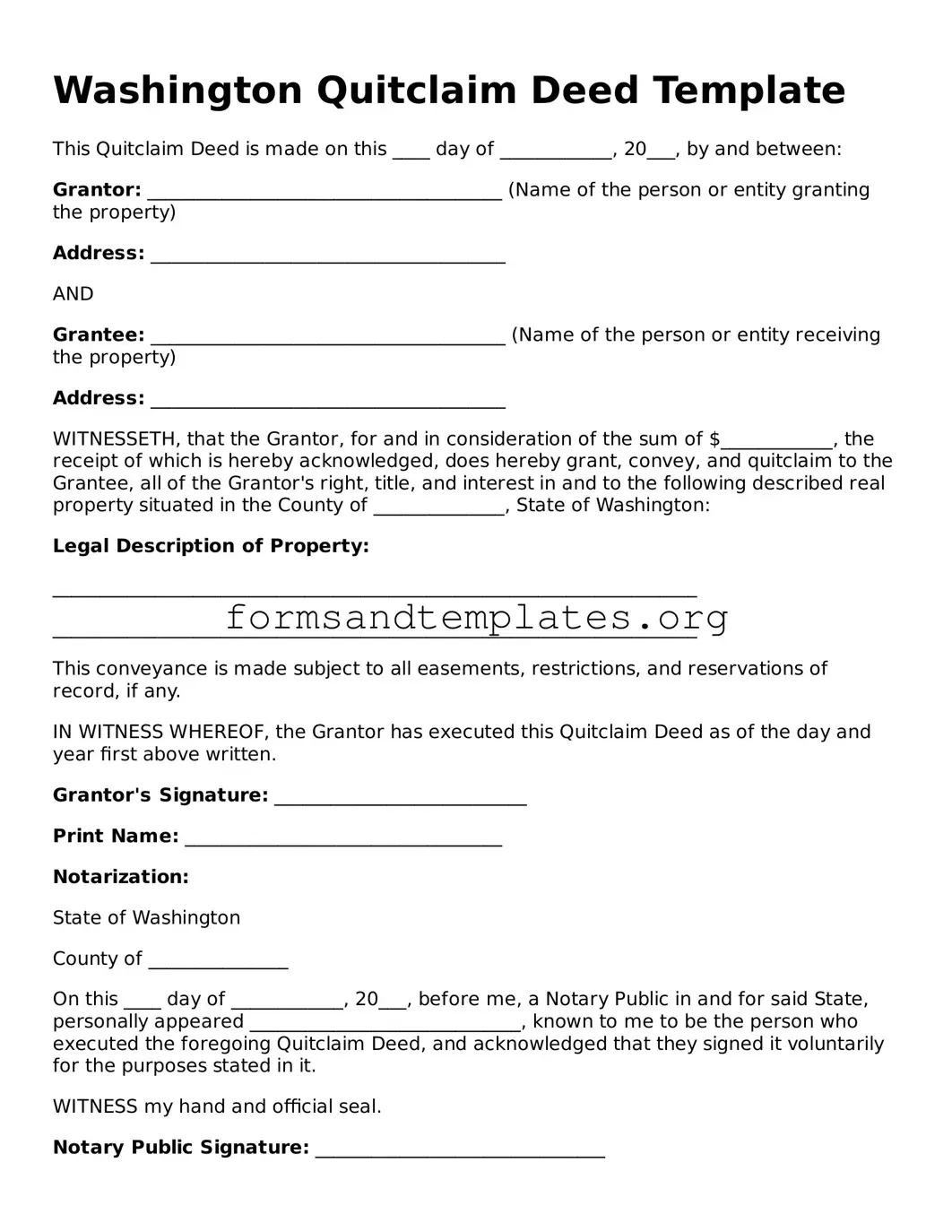Washington Quitclaim Deed Template
This Quitclaim Deed is made on this ____ day of ____________, 20___, by and between:
Grantor: ______________________________________ (Name of the person or entity granting the property)
Address: ______________________________________
AND
Grantee: ______________________________________ (Name of the person or entity receiving the property)
Address: ______________________________________
WITNESSETH, that the Grantor, for and in consideration of the sum of $____________, the receipt of which is hereby acknowledged, does hereby grant, convey, and quitclaim to the Grantee, all of the Grantor's right, title, and interest in and to the following described real property situated in the County of ______________, State of Washington:
Legal Description of Property:
_____________________________________________________________________
_____________________________________________________________________
This conveyance is made subject to all easements, restrictions, and reservations of record, if any.
IN WITNESS WHEREOF, the Grantor has executed this Quitclaim Deed as of the day and year first above written.
Grantor's Signature: ___________________________
Print Name: __________________________________
Notarization:
State of Washington
County of _______________
On this ____ day of ____________, 20___, before me, a Notary Public in and for said State, personally appeared _____________________________, known to me to be the person who executed the foregoing Quitclaim Deed, and acknowledged that they signed it voluntarily for the purposes stated in it.
WITNESS my hand and official seal.
Notary Public Signature: _______________________________
My Commission Expires: _______________________________
This Quitclaim Deed is executed in accordance with the laws of the State of Washington.
